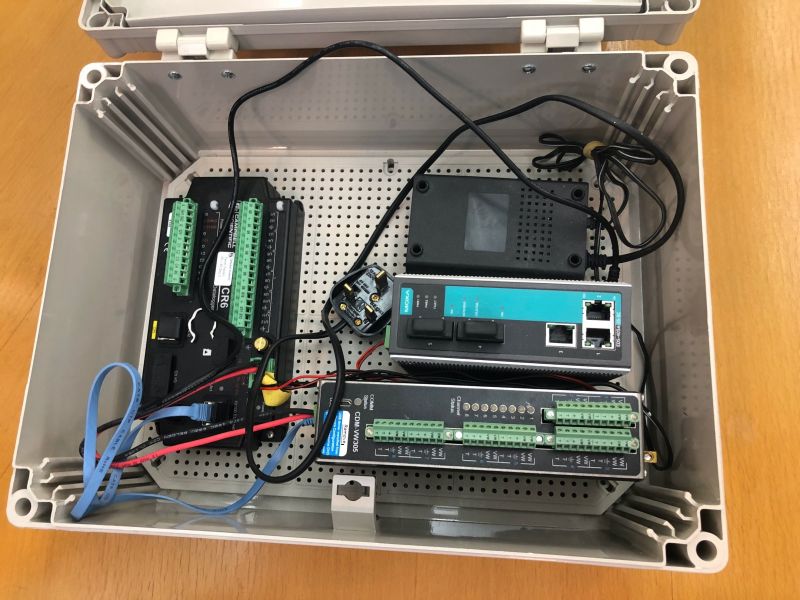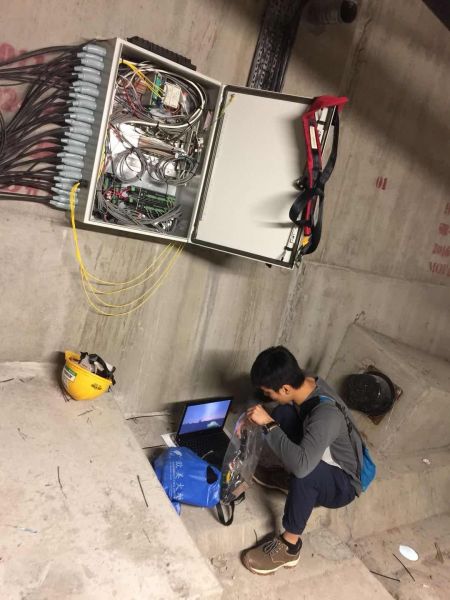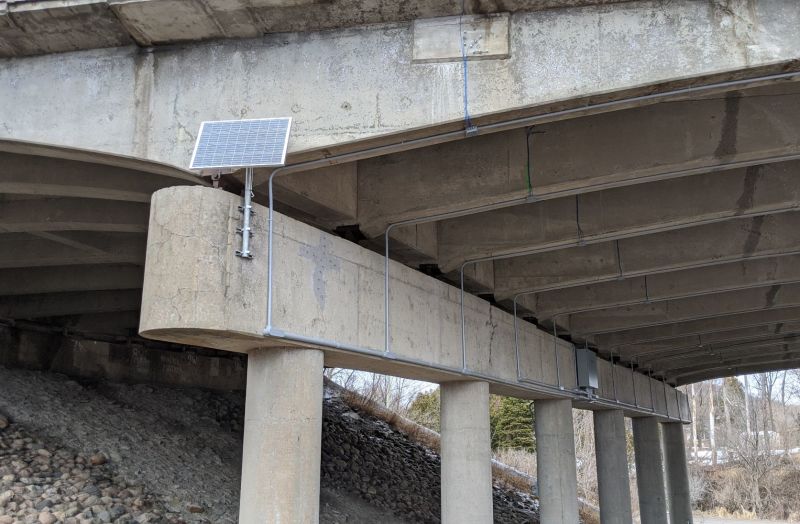CR6 が世界中で地質工学アプリケーション向けの自動監視プラットフォームとして好まれているのはなぜでしょうか?
by Michael Adams | 更新日: 01/08/2024 | コメント: 0

地盤工学アプリケーションにCR6 自動監視プラットフォーム をご利用でない場合、計測・監視ネットワークの成功に役立つ重要なメリットを逃している可能性があります。データ収集システムに関する30年の経験に基づき、CR6が地盤工学アプリケーションに最適な自動監視プラットフォームである理由を解説します。
柔軟性とその他の利点
ご存知ないかもしれませんが、CR6はあらゆる計測タスクに対応できる比類のない柔軟性を備えています。CR6は、1つの自動監視プラットフォームでこれほど多くの機能を提供できるという点で他に類を見ない製品です。
- アナログまたはデジタル機能に合わせて個別に設定できる12個のユニバーサル入力
- 優れた測定解像度と使いやすさを提供する24ビットA/Dコンバータ
- 50ナノボルトの極めて高い測定分解能で、測定値のわずかな変化も区別できます。
- ウェブブラウザ経由で直接接続するための埋め込みウェブページ
- 特許取得済みのVSPECT®スペクトル解析技術を使用した静的バイブレーティングワイヤー測定のサポート
- SDI-12、RS-232、RS-485 を使用したシンプルなシリアル センサー統合と測定
- SPI、Modbus、SMTP/TLS、HTTP(S) など、さまざまな通信およびインターネット プロトコルをサポートする複数のデジタル入力
現時点では、お客様のプロジェクトでは複数のセンサーインターフェースオプションや50ナノボルトの測定分解能、あるいはあらゆるブラウザから内部Webページにアクセスできる機能さえも必要とされないかもしれません。しかし、これらの機能と特徴は、ローガンオフィスで製造・出荷されるすべてのCR6に搭載されており、必要な時にいつでもご利用いただけますのでご安心ください。
CR6は柔軟性に富み、複数のベンダーのセンサーオプションとの統合が可能です。つまり、既存のセンサーを新しい機器に交換する必要はありません。
CR6で私が特に感銘を受けたのは、その校正です。CR6をご購入いただくと、-55℃~+85℃の温度範囲において、弊社の仕様書に記載されている精度を満たすことが保証されます。
この自動監視プラットフォームは消費電力が低いことをお伝えしましたか?CR6の静止電流は1ミリアンペア未満です。限られた電源リソース(ソーラーパネルやバッテリーなど)に依存している場合に最適です。
土木業界特有のメリット
CR6の設計に着手した当初、私たちは土質工学業界に特化したプラットフォームを設計することを念頭に置いていました。Campbell Scientificでは、特にセンサーが恒久的に設置される用途において、バイブレーティングワイヤー技術とうまく連携するプラットフォームを構想しました。
ご存知ないかもしれませんが、当社はバイブレーティングワイヤー技術において豊富な経験を有しています。実際、最初のバイブレーティングワイヤーセンサーインターフェースであるAVW1を1986年に開発しました。バイブレーティングワイヤーセンサーは地盤モニタリングの王者ですが、RS-485、SDI-12、4-20mA、レシオメトリックmv/Vセンサーといった他の技術の重要性も認識していました。多くの地盤プロジェクトにおいて、プロジェクトプランナーや資産所有者はこれらのセンサー技術をすべて必要としています。CR6は非常に幅広い柔軟性を備えているため、これらの様々なセンサー技術と統合でき、地盤センサーメーカーが再販する自動モニタリングプラットフォームとして好まれています。実際、CR6は地盤センサーメーカーによる社内センサー検証や校正にもよく使用されています。
実用的なアプリケーション
CR6がバックグラウンドで動作し、あらゆる種類の測定を行うアプリケーションはおそらく数千に上ります。データはクラウドホストまたは中央サーバーにアップロードされるか、無線ネットワークを介して中央PCに遠隔測定されます。
プロジェクトには大規模なものもあれば、小規模なものもあり、どのプロジェクトも正確で信頼性が高く、実績のある自動監視プラットフォームに依存しています。CR6は世界中で数多くの重要なプロジェクトで活用されていますが、ここではその中からいくつかを簡単にご紹介したいと思います。
香港珠海マカオ橋(HZMB)

現在、HZMBは全長29.6km(18マイル)で世界最長の海上橋です。この橋は過酷な気象条件にさらされるため、全長にわたる構造健全性を監視することが不可欠です。このプロジェクトでは、CR6と高速Granite™ VWire 305ダイナミックバイブレーティングワイヤーアナライザを組み合わせることで、比類のない長期安定性とバイブレーティングワイヤーセンサーの真のゼロ復帰を実現しました。
橋周辺では雷雨が発生する確率が高いため、橋沿いの長距離通信回線を接続するために光ファイバー-イーサネットコンバータが選択されました。各CR6は橋の全長にわたって専用の設置場所に配置され、各設置場所に指定されたセンサーの数に対応するために複数のVWire 305アナライザーが備え付けられています。
バイブレーティングワイヤー センサーの使用に加えて、顧客は各 CR6 に陽極ラダー腐食センサーを提供して設置し、プロジェクトの存続期間中の腐食深さの変化を監視しました。
詳細については、香港:世界最長の海上横断の長期モニタリングのケース スタディをお読みください。
カナダ高架道路

CR6と複数のVWire 305アナライザは、コンクリート高架橋の構造健全性と主応力を監視するプロジェクトにも使用されました。VWire 305は多チャンネル同時測定が可能なため、ロゼットパターンに配置されたバイブレーティングワイヤーひずみゲージの測定に最適でした。CR6とVWire 305アナライザは、高架橋を横断する交通負荷を捉え、構造物の機能寿命と健全性の判定に役立ちました。
このプロジェクトの詳細については、カナダ:高架の構造ヘルスモニタリングのケーススタディをご覧ください。
要約すれば
では、なぜCampbell Scientificの自動モニタリングプラットフォーム、特にCR6を次の地盤工学プロジェクトに選ぶべきなのでしょうか?私が挙げた理由をいくつかご紹介します。
- Campbell Scientific は、50 年間事業を展開し、13 の地域オフィスを擁して世界中に拠点を置く評判の高い企業として信頼されています。
- 必要なときには、当社に頼れば、比類のないカスタマー サポートが受けられることをご承知おきください。
- 当社は地質工学市場のニーズに専心し、製品と社名の機能性、性能、成功に心血を注いでいますので、ご安心ください。
Campbell Scientificのロゴが入った製品をお使いいただくということは、50年にわたる当社と従業員の革新、献身、そしてコミットメントの賜物であり、お客様が最良のサービスを受け、短期的にも長期的にも成功できるよう尽力していることを実感していただけることでしょう。従業員として、多くのお客様の事業、様々な業種、そして技術と知識の進歩に必要な研究開発の成功に貢献してきたことを誇りに思い、やりがいを感じています。地盤工学プロジェクトにおいて、当社とパートナーを組む機会をいただき、誠にありがとうございます。
次回の地質工学プロジェクトにCR6自動監視プラットフォームを実装する方法の詳細については、(435)227-9040まで当社のインフラストラクチャ専門家にお問い合わせください。
















 Michael Adams was a Sales Engineer for the infrastructure and geotechnical markets at Campbell Scientific, Inc. He has a degree in Electronic Systems, which he applied for more than 30 years in system design, field deployment, and system longevity/reliability—with a strong focus on instrumentation and field troubleshooting. When he was not working, Michael could be found cycling, skiing, or flyfishing.
Michael Adams was a Sales Engineer for the infrastructure and geotechnical markets at Campbell Scientific, Inc. He has a degree in Electronic Systems, which he applied for more than 30 years in system design, field deployment, and system longevity/reliability—with a strong focus on instrumentation and field troubleshooting. When he was not working, Michael could be found cycling, skiing, or flyfishing.
コメント
Please log in or register to comment.